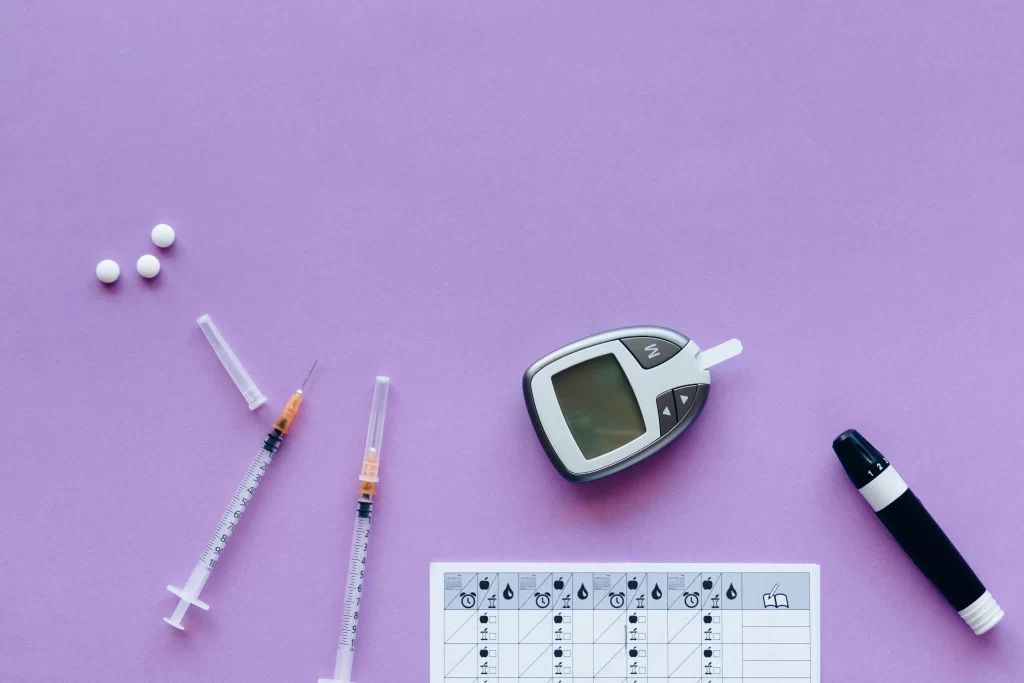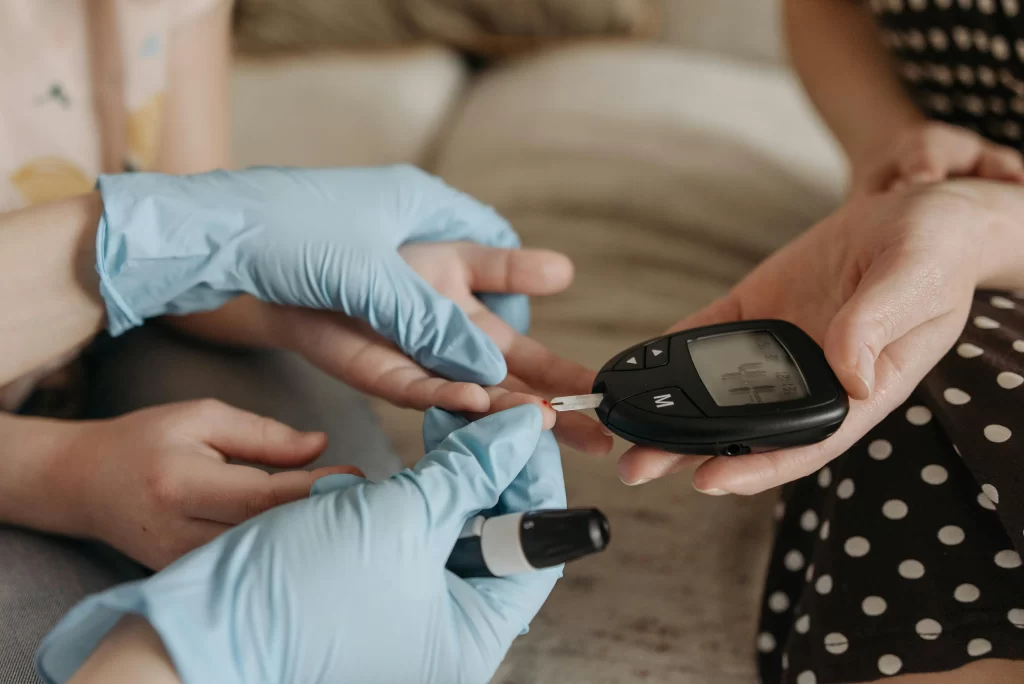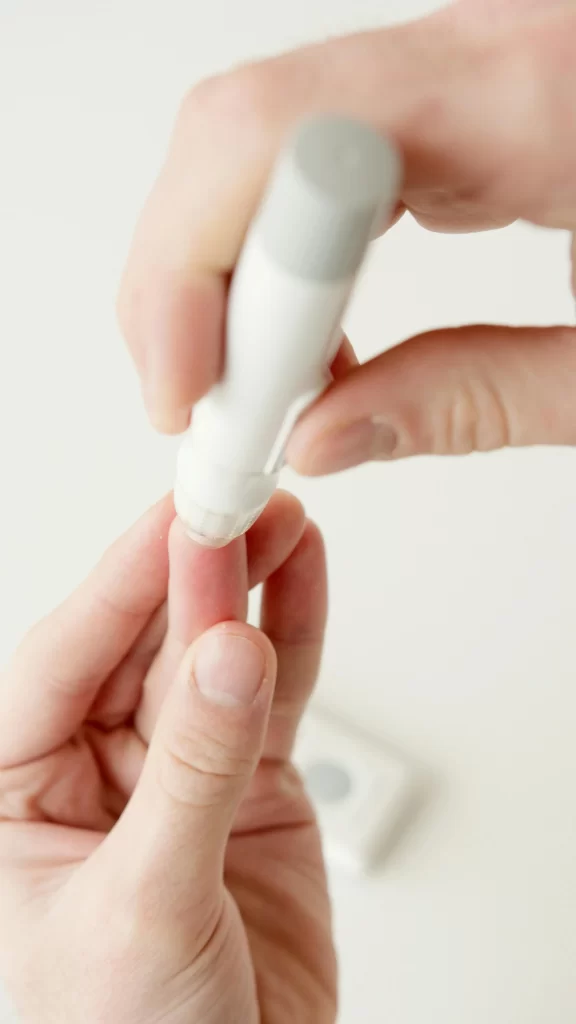Living with diabetes doesn’t mean giving up the comfort and independence of home.
In fact, many seniors find that managing their diabetes at home, surrounded by familiar faces and cherished belongings, leads to better health outcomes and a higher quality of life.
The key is creating a supportive environment where diabetes management home care becomes a natural part of daily routine rather than a burden.
When you have the right support system in place, managing diabetes at home can feel empowering rather than overwhelming. Professional home health nurses bring their expertise directly to your living room, working alongside you and your family to build confidence and establish routines that truly work for your lifestyle.
Related: Home Health Care in Houston: A Local Guide for Families
Why Diabetes Management Home Care Works Better for Seniors

There’s something special about receiving care in your own home. The familiar surroundings, the comfort of your favorite chair, and the presence of loved ones create an atmosphere where healing and health management can flourish.
For seniors managing diabetes, this environment offers unique advantages that clinical settings simply can’t match.
Reduced Risk of Hospital Readmissions
Nobody wants to spend their golden years shuttling back and forth to the hospital.
With diabetes management home care, experienced nurses keep a watchful eye on your blood sugar trends and catch potential problems before they become emergencies. Think of it as having a healthcare guardian angel who knows your patterns and can spot trouble brewing.
When a skilled nurse visits regularly, they’re getting to know you as a person. They notice when your usual energy seems off, when a small cut isn’t healing as quickly as it should, or when your medication routine needs tweaking.
This personal attention through skilled nursing services helps prevent those scary middle-of-the-night trips to the emergency room.
Looking for support for your at-home care? We’re here to help! Refer a patient to us today to get the process started.
Personalized Care in Familiar Environment
At home, healthcare providers can see how you naturally move through your day, understand your preferences, and work with your existing routines rather than against them. Maybe you’re a morning person who likes to test your blood sugar with your first cup of coffee, or perhaps you prefer evening medication with dinner. Home care adapts to you (or your loved one).
Being in your own space also means less stress, and we all know how stress can send blood sugar levels on a roller coaster ride. When you’re relaxed and comfortable, your body responds better to treatment, and you’re more likely to stick with the plan because it feels manageable and realistic.
Better Medication Adherence Rates
Let’s be honest, keeping track of multiple medications can feel like a part-time job. But when a caring nurse sits at your kitchen table and helps you organize your pills, explains what each one does, and shows you the best way to give yourself insulin, it suddenly becomes much more manageable.
They’re not rushing you through an appointment; they have time to answer your questions and address your concerns.
Home care providers understand that everyone learns differently. Some people need to see something demonstrated multiple times, others prefer written instructions, and some learn best by doing it themselves with gentle guidance. The beauty of diabetes medication management at home is that there’s time and space for whatever approach works best for your loved one.
Continuous Family Support Integration
Home health professionals become teachers and coaches for your loved ones, showing them how to support you while respecting your independence. It’s beautiful to watch adult children learn to help their parents with confidence rather than worry.
When everyone in the household understands diabetes management, mealtimes become collaborative rather than stressful, and family members feel equipped to recognize when something needs attention.
How to Set Up Essential Monitoring Equipment at Home

Creating a diabetes care station in your home doesn’t require a complete room makeover, but some thoughtful organization that makes daily monitoring feel routine and stress-free. The goal is to make blood sugar testing as natural as brushing your teeth.
Looking for support for your loved one? Our advanced disease management expert care helps you take care of them in the comfort of their home.
Blood Glucose Monitoring Devices Setup and Placement
Think about where you spend most of your time and feel most comfortable. Many people find that setting up their testing supplies on a bedside table or in a cozy corner of the living room works perfectly. You’ll want good lighting for reading those little numbers and a comfortable place to sit.
Gather all your blood glucose monitoring devices and supplies in one pretty basket or drawer — your glucose meter, test strips, lancets, and a notebook for jotting down readings.
Keep it simple but complete. It’s amazing how much easier testing becomes when everything has its place and you’re not hunting around for supplies.
Consider your daily routine when choosing the perfect spot. If you love your morning coffee ritual, maybe place your testing supplies nearby so you can check your blood sugar while the coffee brews. Making diabetes care part of existing habits helps it feel less like a medical chore and more like caring for yourself.
Continuous Glucose Monitoring Systems Installation
The beauty of continuous monitoring is that it tells a story about your loved one’s blood sugar throughout the day and night. You’ll start to see patterns you never noticed before, like how your morning walk affects your levels or how well you sleep when your bedtime snack hits just right.
Many of these systems connect to smartphones or special receivers, and yes, you can learn to use them regardless of your comfort level with technology. Healthcare providers are patient teachers, and family members often enjoy helping set up and understand these helpful devices.
Creating a Daily Testing Schedule
Rather than seeing blood sugar testing as an interruption to your day, think of it as check-ins with the body. Most people find that testing before meals and at bedtime creates a nice rhythm that becomes second nature over time.
The testing schedule should work with your life, not against it. If your loved one takes physical therapy sessions on certain days, or has regular coffee dates with friends, you can help them build their testing routine around these activities. Flexibility is key. The best schedule is the one you’ll actually follow.
Remember that this information is incredibly valuable for your healthcare team. Those numbers tell a story about how the body responds to food, activity, stress, and medication. You’re gathering intelligence that helps everyone make better decisions about your care.
Emergency Supply Organization
Keep glucose tablets or juice boxes in several locations around your loved one’s home — by their bed, in the kitchen, and wherever they spend time during the day. Think of these supplies as insurance you hope you’ll never need.
What Daily Care Routines Include for Diabetic Seniors
The most successful diabetes management happens when healthy habits become as automatic as brushing teeth for your loved one. These daily routines might seem overwhelming at first, but with time and practice, they become a caring ritual; a way of helping your loved one honor their body and health while maintaining their independence.
Morning Blood Sugar Testing Protocol
Starting your loved one’s day with a blood sugar check is like getting a morning weather report for their body. Before they reach for that first cup of coffee or glass of orange juice, encourage them to take a moment to see how their body fared overnight. This simple practice sets the tone for making good choices throughout the day.
Help make this morning ritual pleasant by setting up a comfortable spot with good lighting, perhaps near a window where your loved one can watch the sunrise. Keep their testing supplies organized and easily accessible — there’s no need for them to start their day rummaging through drawers or squinting at tiny numbers in poor light!
We know that some days will be better than others for your loved one, and that’s perfectly normal. The key is consistent testing so you and their healthcare team can spot patterns and make adjustments when needed.
Your loved one’s diabetes management home care routine builds on this foundation of daily awareness.
Medication Timing and Documentation
Many families find success by linking medication times to existing habits like meals or favorite television shows. This connection makes remembering much more natural for your loved one.
Consider helping your loved one use a simple pill organizer or smartphone app to track when they’ve taken each medication. There’s real satisfaction in checking off completed tasks, and it eliminates the “Did I take my medicine?” worry that can creep in later for them. Keep a simple log of their insulin administration techniques and any reactions or concerns—this information is gold for their healthcare providers.
If injecting insulin feels overwhelming for your loved one at first, remind them that millions of people manage this successfully every day.
You can work with their nurse to help them find injection sites that are comfortable and learn proper rotation to keep their skin healthy. With practice, this becomes as routine as any other aspect of self-care for your loved one.
Foot Inspection and Care Routine
Your loved one’s feet work hard for them every day, and when they have diabetes, their feet deserve extra attention and care. Think of daily foot inspection as a loving check-in with these faithful servants. Help them look for any changes like cuts, blisters, redness, or areas that feel different than usual.
Diabetic foot care at home becomes a pleasant ritual when your loved one approaches it with mindfulness rather than medical dread. After their evening shower, encourage them to take a few minutes to examine their feet, apply moisturizer to keep skin soft, and admire how well their feet have carried them through another day. If your loved one has trouble seeing all areas of their feet, offer to help or suggest using a hand mirror.
Never let your loved one ignore changes in their feet, even small ones. Diabetes can affect healing and sensation, so what might seem minor could become significant without proper attention. Their healthcare team wants to hear about any concerns, and it’s always better to ask about something that turns out to be nothing than to ignore something that needs attention.
Evening Health Assessment Checklist
Ending your loved one’s day with a gentle health check-in helps them wind down while staying connected to their body’s needs. Encourage them to test their blood sugar, reflect on how they felt throughout the day, and jot down any observations in their health journal. Did they feel energetic after lunch? Was their afternoon walk particularly enjoyable?
This evening routine is also perfect for preparing tomorrow’s success for your loved one. Help them organize their medications, check their testing supplies, and perhaps plan tomorrow’s meals. This preparation eliminates morning stress and helps ensure consistent adherence to their diabetes management home care routine.
Use this quiet evening time to help your loved one appreciate their body and acknowledge the care they’ve given it throughout the day. Managing diabetes is an act of self-love, and recognizing their efforts builds confidence and motivation for continued success.
How to Manage Nutrition and Meal Planning at Home

Food should be one of life’s great pleasures for your loved one, not a source of anxiety or deprivation!
With diabetes, consider this an invitation to discover how delicious and satisfying healthy eating can be. The key is planning and understanding how different foods affect their body.
Diabetic Meal Planning and Nutrition Guidelines
Think of meal planning as creating a framework for success rather than restricting your loved one’s enjoyment. Help them build meals around colorful vegetables, lean proteins, and whole grains that provide steady energy without causing blood sugar spikes. The plate method makes this simple: fill half their plate with non-starchy vegetables, one quarter with lean protein, and one quarter with healthy carbohydrates.
Planning ahead takes the guesswork out of daily eating decisions for your loved one and reduces the temptation for them to grab whatever’s convenient when hunger strikes. Spend some time each week thinking about meals they’d enjoy, and consider how they fit into their diabetes management home care routine. Occupational therapy can help your loved one adapt cooking techniques and organize their kitchen for easier meal preparation.
Remember that eating well with diabetes isn’t about perfection for your loved one but about helping them make consistently good choices that support their health while still enjoying food. Allow them flexibility for special occasions and favorite treats, working with their healthcare team to understand how to balance these enjoyments with their overall health goals.
Carbohydrate Counting Made Simple
Learning to count carbohydrates might sound complicated, but it’s really just helping your loved one become friends with food labels and measuring cups. Start simple by focusing on the obvious carbohydrate sources — bread, rice, pasta, fruits, and starchy vegetables. Over time, your loved one will develop an intuitive sense of how much is in their favorite foods.
Many people find it helpful to teach their loved one to use their hands as measuring tools. A cupped palm holds about the right amount of rice or pasta, while a closed fist approximates a serving of fruit. These visual cues work anywhere, whether your loved one is eating at home or dining with friends.
The goal isn’t to eliminate carbohydrates from your loved one’s diet – they’re an important part of a healthy diet! Instead, you’re helping them learn to choose the right amounts at the right times to keep their blood sugar stable. Track their carbohydrate intake alongside their blood sugar readings to discover their personal patterns and preferences.
Portion Control Strategies
Pre-portioning snacks and meal components can be incredibly helpful for your loved one, especially during busy times or when their energy is low. Spend some time on weekends helping them divide nuts into small containers, cutting vegetables for easy snacking, or measuring out serving sizes of favorite foods.
Visual cues help make portion control automatic over time for your loved one. A deck of cards equals about three ounces of meat, a tennis ball represents a serving of fruit, and their thumb tip shows the right amount of added fats like butter or oil. These references work whether they’re at home or eating out.
Safe Food Storage and Preparation
Batch cooking and meal prep can be wonderful tools for your loved one’s diabetes management, ensuring they always have healthy options ready when needed. Help them cook large batches of soups, stews, or casseroles and freeze portions in clearly labeled containers. Having backup meals available prevents the temptation for your loved one to order takeout or skip meals when they’re not feeling their best.
Keep their pantry well-stocked with diabetes-friendly staples like canned beans, whole grain crackers, nut butters, and shelf-stable milk. These ingredients can quickly become satisfying meals or snacks for your loved one when fresh options aren’t available or when they need something quick and reliable.
Refer a Patient For Icon Home Health Today!
Families throughout Houston trust Icon Home Health because we understand that managing diabetes is about more than numbers on a glucose meter, but about helping your loved one maintain independence, dignity, and joy in daily life.
Ready to learn how diabetes management home care can improve your loved one’s quality of life? We’d love to chat with you about their specific needs and show you how our personalized approach can make managing diabetes feel less overwhelming and more empowering for your entire family. Refer a patient today, and let’s start building a care plan that works perfectly for your loved one’s lifestyle and goals.